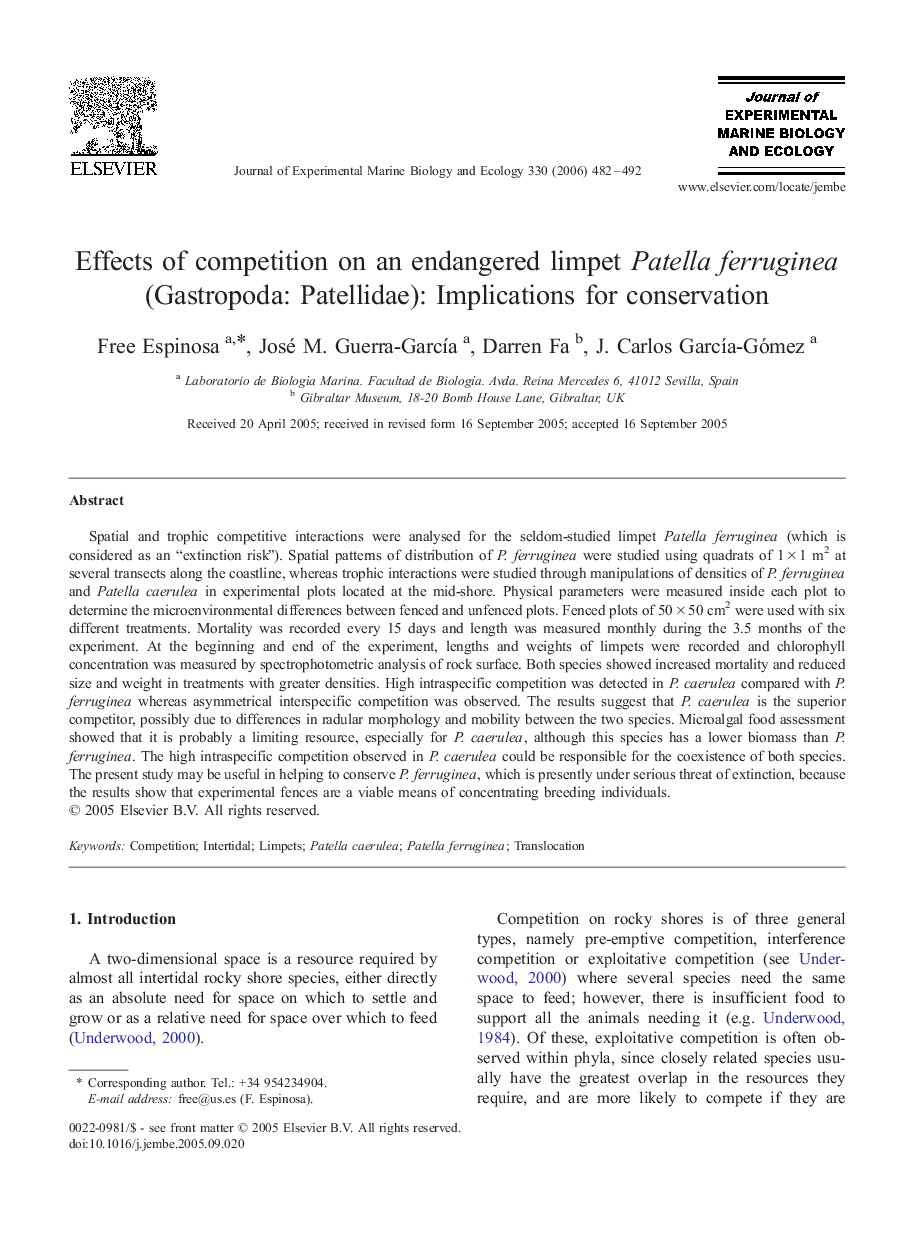| Article ID | Journal | Published Year | Pages | File Type |
|---|---|---|---|---|
| 4398192 | Journal of Experimental Marine Biology and Ecology | 2006 | 11 Pages |
Spatial and trophic competitive interactions were analysed for the seldom-studied limpet Patella ferruginea (which is considered as an “extinction risk”). Spatial patterns of distribution of P. ferruginea were studied using quadrats of 1 × 1 m2 at several transects along the coastline, whereas trophic interactions were studied through manipulations of densities of P. ferruginea and Patella caerulea in experimental plots located at the mid-shore. Physical parameters were measured inside each plot to determine the microenvironmental differences between fenced and unfenced plots. Fenced plots of 50 × 50 cm2 were used with six different treatments. Mortality was recorded every 15 days and length was measured monthly during the 3.5 months of the experiment. At the beginning and end of the experiment, lengths and weights of limpets were recorded and chlorophyll concentration was measured by spectrophotometric analysis of rock surface. Both species showed increased mortality and reduced size and weight in treatments with greater densities. High intraspecific competition was detected in P. caerulea compared with P. ferruginea whereas asymmetrical interspecific competition was observed. The results suggest that P. caerulea is the superior competitor, possibly due to differences in radular morphology and mobility between the two species. Microalgal food assessment showed that it is probably a limiting resource, especially for P. caerulea, although this species has a lower biomass than P. ferruginea. The high intraspecific competition observed in P. caerulea could be responsible for the coexistence of both species. The present study may be useful in helping to conserve P. ferruginea, which is presently under serious threat of extinction, because the results show that experimental fences are a viable means of concentrating breeding individuals.
